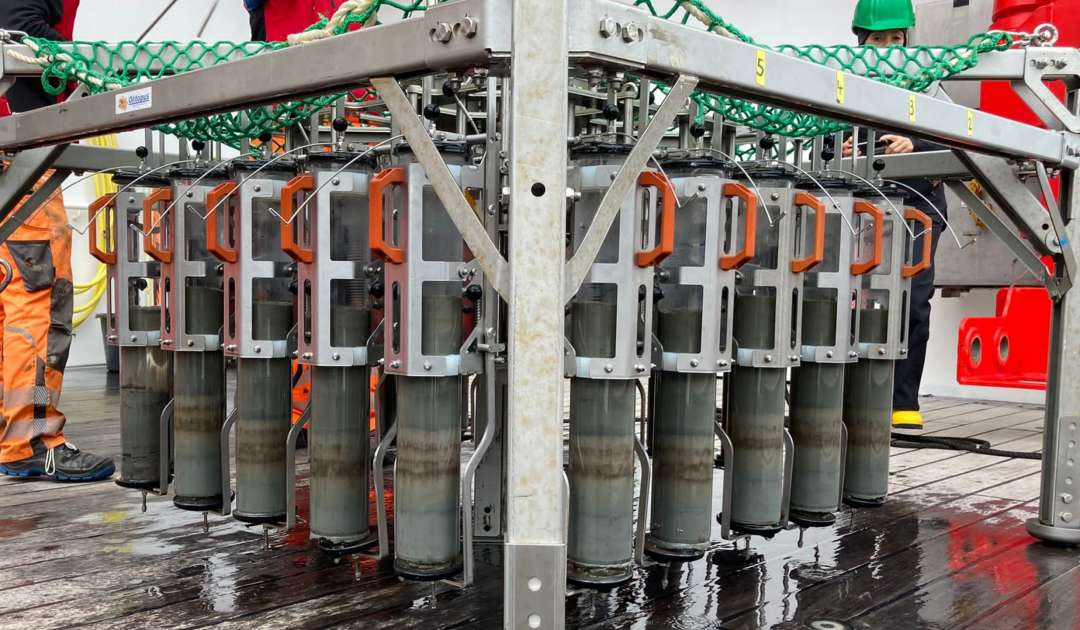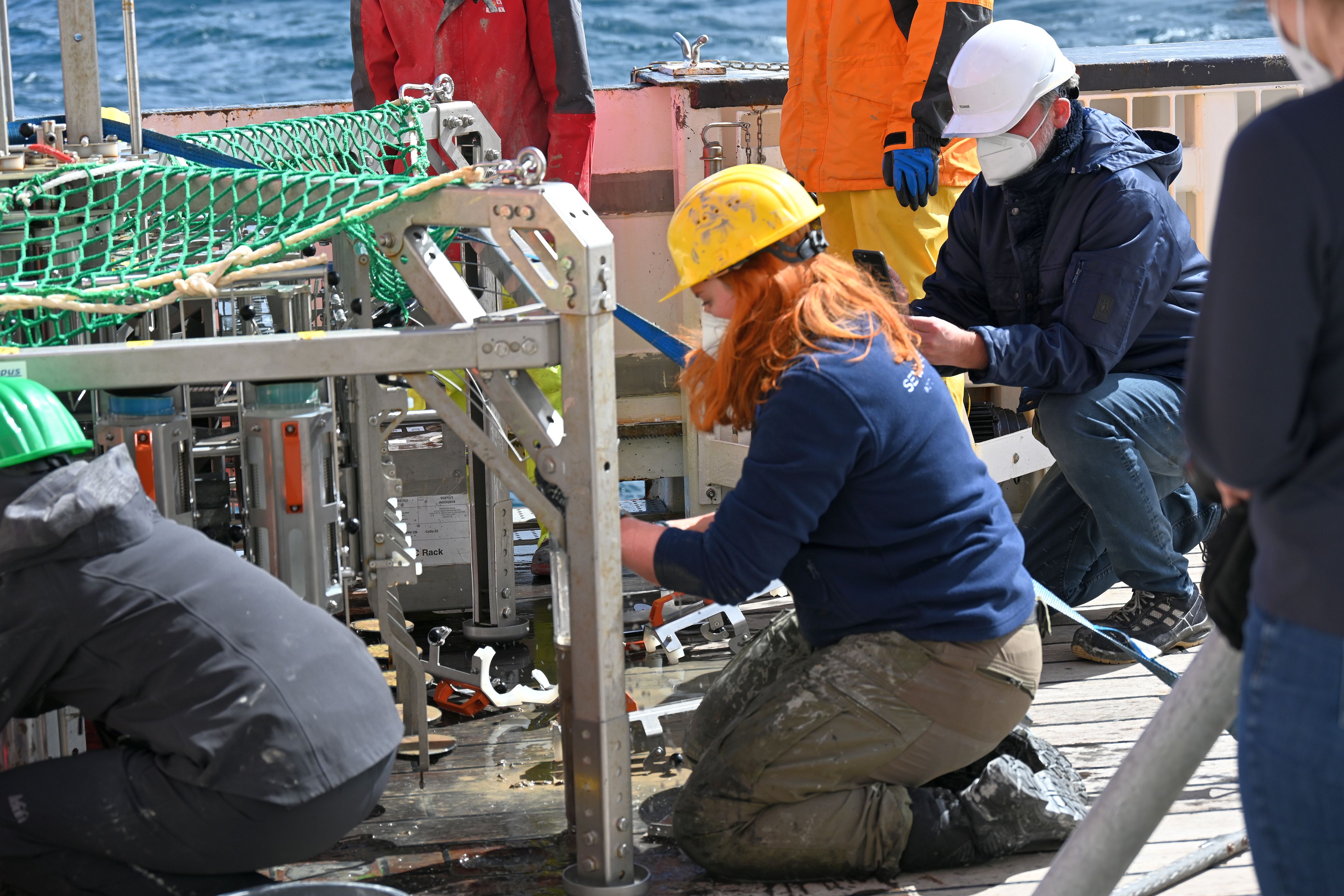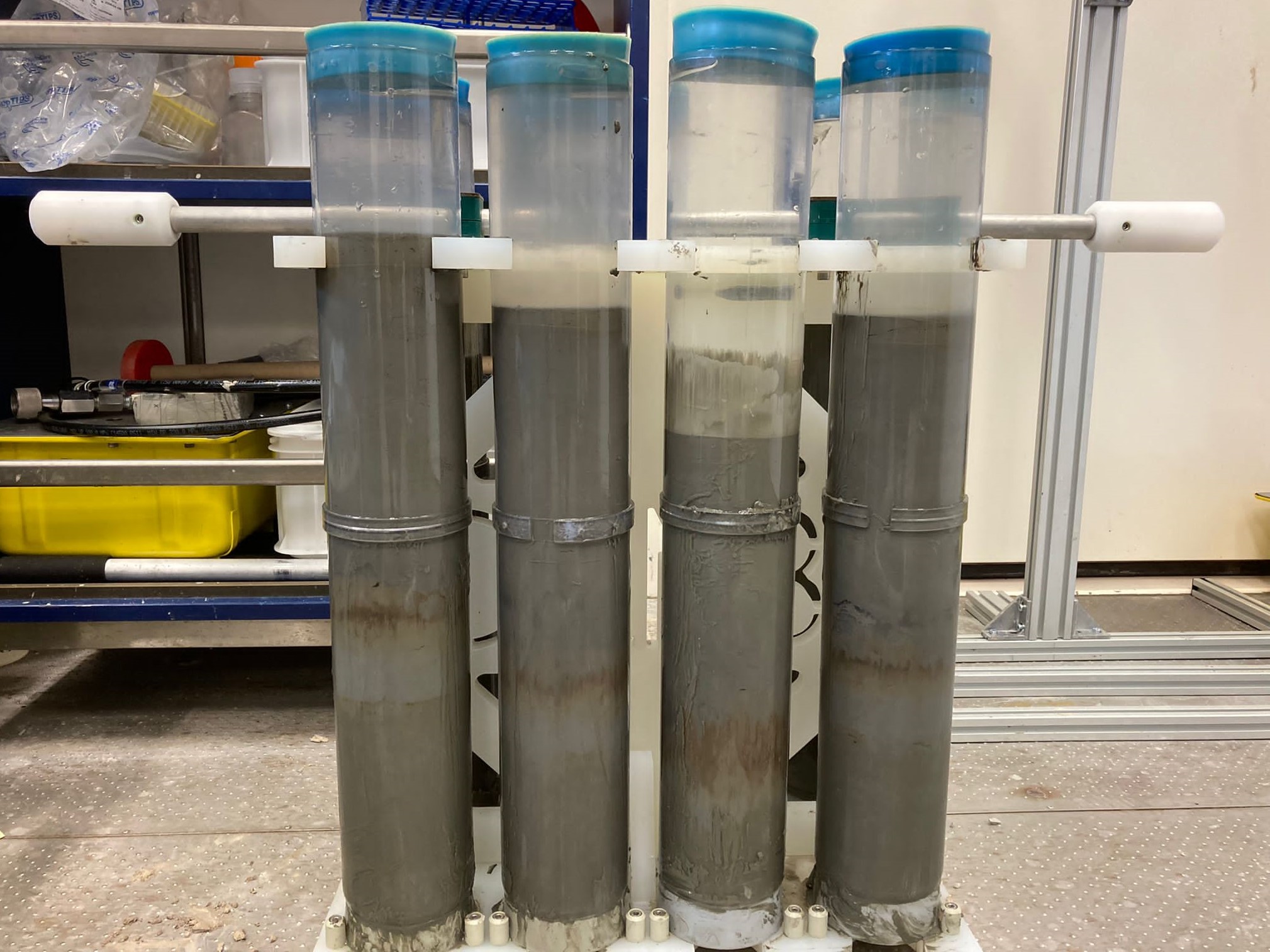Where the cores go
My name is Ann-Kathrin Weßels and I am the second head of the team for the MUC (Multiple Corer), and besides that I am working on my master studies at the DZMB in Wilhelmshaven.
Now, we are almost finished with the expedition and we have finished the station work, i.e. the actual taking of samples. After all this time, a total of 32 deployments, and 445 sediment cores taken, at the end we were a well-rehearsed team. While our team leader Freddy took on the task of getting the equipment ready for use and afterward making sure the deck was clean, I took on the no less important role of taking care of the distribution and subsequent fixation of the samples in the laboratory.
There are a few things to keep in mind when distributing the cores. After all, you can imagine that it is not so easy to cut out an undisturbed piece of soil from several thousand meters down at the sea floor, and then to get it back on the ship in one piece. The whole thing can only be done with the help of our device, the Multiple Corer or MUC. This name can be traced back to the fact that when the device reaches the seabed, it pushes multiple large acrylic tubes – 20 in this case – into the seabed, which close themselves when the MUC is lifted, bringing a small piece of seabed back up in each tube. The sediment samples obtained in this way are also called sediment cores. Due to the nature of the seafloor, or difficult weather conditions, sometimes the sample get disturbed. It can also happen that certain tubes close later, not completely, or not at all.
So, on days when we were not the lucky owners of 20 perfect and undisturbed sediment cores, it was important that the different needs of all participating working groups were taken into account when deciding who would get which sediment cores. It was then my job to make sure everyone was happy with what was available.
Basically, all working groups wanted to have sediment cores with clear bottom water and as undisturbed sediment as possible.
During a mini-interview that I conducted to ask the question “what would the perfect sediment core look like for your working group?” the following answers were given to me:
J.P. answered without thinking, on behalf of the HADAL group: “The perfect core for us would have at least 5 centimeters of clear surface water followed by a 10 centimeter layer of liquid gray sediment. Under this is then compact gray sediment with bands of brown sediment layers.”
Team Foram, Andy and Jan, want as many representatives of the group of foraminifera as possible for their cores, Andy especially xenophyophores, preferably unknown representatives of this group and live specimens.
For our team from the DZMB it is always a bit like Christmas. We pack the sediment cores on board, and then unpack them again in our institute to process them further. The animals that are examined by us in the sediment cores are unfortunately not ones that can be recognized with the naked eye, thus it’s only after further processing of the sediment samples that we know how many animals we have taken home with us. These animals, which belong to the meiofauna, have a size between 0.032 mm and 1 mm and live directly in the sediment in the seafloor.
As a last point, I should mention that we got a perfect conclusion of this expedition with the last gear deployment. The samples that our MUC brought back to the deck were exactly as discribed by the HADAL team. And all the others were standing on the deck with a beaming smile, anticipating how they would process the samples, and maybe a bit sad that the exhausting but also fun part of the work, the sampling has now come to an end.




